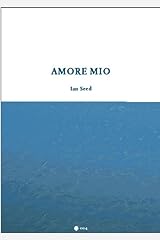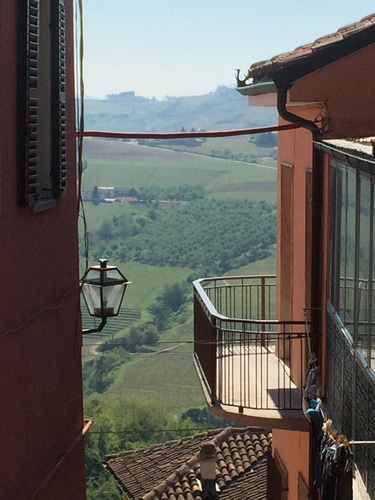The review below is taken from PN Review 234, Volume 43 Number 4, March - April 2017.
Ian Seed, Hilarious & Sad
James Tate, Dome of the Hidden Pavilion
(Harper Collins, 2016) £13.50;
Em Strang, Bird-Woman (Shearsman, 2016) £8.95
Dome of the Hidden Pavilion was James Tate’s seventeenth and last book of poetry. It was published shortly after his death in 2015. Tate had a long and distinguished career, although his work is not that well-known in the UK. His first collection, The Lost Pilot (1967), was selected by Dudley Fitts for the Yale Series of Younger Poets. His Selected Poems (published in the uk by Carcanet) won the Pulitzer Prize and the William Carlos Williams Award in 1991. Influenced by Wallace Stevens, many of Tate’s earlier poems use unrhymed tercets and adopt a reflective, meditative tone. They are haunted by a sense of loss, as shown in one of his more familiar poems, ‘The Lost Pilot’, written for his father who was killed in action in 1944:
I feel dead. I feel as if I were
the residue of a stranger’s life,
that I should pursue you.
My head cocked toward the sky,
I cannot get off the ground,
and, you, passing over again,
fast, perfect, and unwilling
to tell me that you are doing
well, or that it was a mistake
that placed you in that world,
and me in this; or that misfortune
placed these worlds in us.
From his second collection, The Oblivion Ha-Ha (1970), until the late 1980s, Tate’s poems moved to a highly original use of surrealism and absurdism, with, in the words of Anthony Caleshu, a close attention to ‘language games, syntactical variations, and shifting registers’ (see ‘James Tate’s Recent Prose Poetry’ in pnr 205). These poems are often funny enough to make one laugh out loud, but they can also be powerfully poignant. In an interview with Charles Simic for the Paris Review in 2006, Tate himself said: ‘I love my funny poems, but I’d rather break your heart. And if I can do both in the same poem, that’s the best. If you laughed earlier in the poem, and I bring you close to tears in the end, that’s the best. That’s most rewarding for you and for me too.’
With the publication of Distance from Loved Ones in 1990 there was a distinct move away from compression to a more open narrative which makes use of the longer line and enjambment. Although the poems are still very much in the absurdist tradition, they rely mainly on the twists and turns of a storyline. Although they do not look like prose poems because they are not square blocks of text on page, the effect they have is one not dissimilar to that of the prose poems of Max Jacob. Tate, like Jacob, draws us irresistibly into another world.
Dome of the Hidden Pavilion continues in this vein. The only real difference is that the lines now come so close to the right margin of the page that they look tantalisingly like prose with a ragged right margin. From the opening lines of the first poem, ‘Mr Leaves’, this is a book which, like any collection of good stories, is hard to put down:
I saw someone coming in the distance, but couldn’t make
out who it was. The closer they got the more blurred the face
became. Until finally I saw it was just a whirlwind of leaves.
It was only me on a football field walking toward the street
with my handbag thrown over my shoulder with this big funnel
of leaves coming toward me like a man. Then it passed by me
and went on up the street. And then it disappeared. I walked on,
toward the bank where I had some business to do.
Most of the poem-stories in The Dome of the Hidden Pavilion feature first-person narrators in small-town America who are simply trying to get on with the daily business of living when something strange and out-of-this-world enters their lives. There are subtle religious connotations here, and it is difficult at times not to think of Tate as a kind of secular George Herbert. If only there could be an honest meeting, then perhaps some kind of healing towards wholeness could occur. However, in the world depicted by Tate many of these meetings with strangers seem to dissolve before they have really taken place. The effect is both hilarious and sad, and however outlandish the story, the moment of epiphany (usually one of realisation of failure) feels authentic and somehow inevitable.
There is a great emphasis on dialogue in these poems. The frequent repetition of ‘I said’, ‘he said’ and ‘she said’ has a rhythmical, even hypnotic effect. Yet, as in an Ionesco play, the characters are mainly talking at cross-purposes, frequently in a mechanical manner, as if they are speaking only as they are expected to because of the way they are trapped, for example by a marital relationship:
My wife said to me, ‘Leroy, if you want rabbit stew you’re
just going to have to go out there and kill a rabbit.’ I said,
‘I never said anything about wanting rabbit stew.’ ‘But you
were acting like you wanted rabbit stew,’ she said. ‘I don’t
know what you mean by that. I was just being me,’ I said.
(‘The Rabbit God’)
One could easily imagine cartoon illustrations with these poems, but as with many cartoons, there is often a more serious political purpose at work, even within the most slapstick of these pieces. Although Tate never takes an explicit political stance, the effect of politics can be seen in his characters’ lack of control over their own destiny, which is decided by much greater events such as war and acts (or feared acts) of terrorism. An existential terror of the abyss lies beneath the surface of all these poems, however comically it is portrayed:
‘I walk around all day feeling
there is something missing. I don’t know what it is, but nothing
seems complete without it. Even when my husband’s here, I feel
it, some crack in the fabric of our being. Do you know what
that’s called?’ she said. ‘Everything is in here,’ I said.
‘Like right now,’ she said. ‘I feel that God has flown away […]’
(‘The Encyclopedia Salesman’)
Bird-Woman is Em Strang’s first collection of poetry. In its powerfully-meditative tone, its striking and compelling imagery, and its depiction of another world which nevertheless is inextricably linked to everyday reality, it bears a resemblance to James Tate’s work. Here we are in the presence of the mythical, but the myth is embedded in a very physical way to the real landscape of the Scottish hills and forests. At the same time, this landscape is forever shifting and may dissolve into something more terrifyingly metaphysical and dreamlike, a place
where great northern divers
are throats from the other side,
where nothing any of us can speak of
seems real
(from ‘Apokatastasis’)
Beauty is ever-present and yet along with that beauty there is a sense of menace, which may turn unexpectedly at any moment into devastating violence:
The two men, hands in pockets,
feet sinking into the grey-black of the road.
The sun is hot and high and they wade into the field,
lose themselves to the waist in straight, green blades.
The bird-woman is scuffing the soft, loose earth,
making a bowl for the body.
She lays the bird with its broken neck
and covers it with clover,
small red flowers, lucky leaves.
When the men capsize her
the pleats of her dress unfurl.
The ground takes their weight.
(‘Bird-Woman’)
Strang’s narratives play with ambiguity. We can never be quite sure what is going on, what has really happened. It is as if we have caught a glimpse of something, only to look again to see that nothing is there, or that it is not what we thought it was. The differences between animals and human beings (or whatever we imagine those differences to be) dissolve into one another. Our ability to be at one with other animals is rooted in physicality, yet it also has a strong mystical dimension, one that may be terrifying but that will ultimately enrich us if we can allow what is ‘other’ to enter our lives. In this sense, Strang is a less despairing poet than Tate because she believes, ultimately, that meaningful encounters can and must take place.
The dramatic (and at times tragic) in Strang’s work is fortunately counterbalanced in many poems by a gentle humour and the affectionate portraits of characters who inhabit the landscape, for example ‘Tog Muhoni’, reminiscent of Edward Thomas’s ‘Lob’:
Because when you see him you know, small light in a night forest,
that his name is Tog Muhoni and his smile tells the way the river bends
and how he crossed it, one foot dragging behind like a snapped limb:
to stay or to go? You’re late for something, driving, and your whole life
is mapped out in the arm he’s missing.
(from ‘Tog Muhoni’)
As with Tate, it is impossible not to want to read on. Bird-Woman is a powerful first collection whose poems enter the bloodstream and remain.
This review is taken from PN Review 234, Volume 43 Number 4, March - April 2017.




